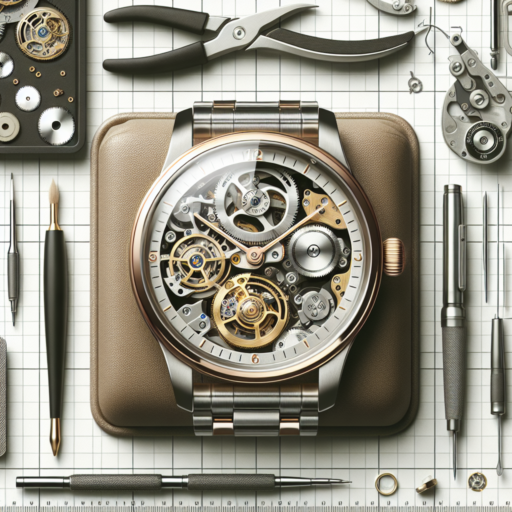Are watch pins standard?
When it comes to watch maintenance and customization, understanding the uniformity of watch pins can save time and effort. The question of whether watch pins are standard has a nuanced answer. In the vast world of watches, from luxury brands to budget options, the pins that secure the watch strap or bracelet to the case are crucial for functionality and aesthetics. Yet, their standardization is not as simple as one might hope.
Watch pins, often referred to as spring bars, vary significantly in terms of diameter and length, depending on the watch design and brand. While there is a common range of sizes that most watch brands adhere to, finding a universally sized pin is rare. This diversity is due to the variety of watch case sizes, strap widths, and the overall aesthetic design that each brand aims to achieve.
Varieties and Considerations
- Diameter Variations: The diameter of watch pins can affect the strength and stability of the strap attachment. Typically, they range between 1.5mm to 1.8mm, with some robust designs requiring thicker pins.
- Length Diversity: The length is crucial for ensuring the pin fits snugly between the lugs of the watch. Common lengths vary from 16mm to 24mm, but precise measurements are necessary for a perfect fit.
- Quick Release Mechanism: Some modern watches come equipped with quick release pins, adding a layer of convenience for changing straps but also influencing the standardization of pin sizes.
In practical terms, while there is a semblance of standardization in watch pins, it is essential for watch owners and enthusiasts to measure existing pins or consult manufacturer specifications for replacements. The diversity in pin sizes mirrors the diversity in wristwatch designs, showcasing the intricate balance between functionality and aesthetic appeal.
What are watch strap pins called?
When it comes to securing a watch strap to a watch case, the small but essential components known as watch strap pins play a pivotal role. These pins, often overlooked, are vital for the functionality and aesthetic of a timepiece. The terminology surrounding watch strap pins can vary, but they are commonly referred to by several names that denote their purpose and design.
The most widely recognized term for these components is spring bars. Spring bars are a type of watch strap pin designed with a spring mechanism that allows them to expand and retract. This functionality makes it easy to install or remove the strap from the watch case without the need for specialized tools. The versatility and reliability of spring bars have made them the standard choice for most watchmakers and enthusiasts alike.
Another term associated with watch strap pins is watch pins or watch lug pins. These names highlight the pin’s role in connecting the strap or bracelet to the watch’s lugs—the protrusions on a watch case designed to secure the strap. Despite the different terminologies, the core function remains the same: to securely attach the strap to the watch, ensuring it stays in place during wear.
No se han encontrado productos.
How do you measure a watch pin size?
Measuring the correct watch pin size is essential for ensuring the proper fit and function of your watch band. The pin, or spring bar, connects the watch band to the watch case, keeping it secure on your wrist. Determining the correct size involves a few straightforward steps and tools you might already have at home.
Required Tools and Steps
To accurately measure your watch’s pin size, you will need a ruler or a caliper, which provides more precise measurements. The first step is to remove the existing pin from the watch, which can usually be done using a small spring bar tool or a thin screwdriver. Once removed, lay the pin flat against the ruler or place it within the caliper. Measure the pin’s length in millimeters, as this is the standard unit of measurement for watch pins. Be sure to measure from one end of the pin to the other, excluding any protruding parts designed for easier removal.
Understanding the Measurements
The typical range for watch pin sizes is between 8mm and 25mm. Knowing the exact size in millimeters is crucial because even a slight difference can affect the watch’s functionality. A pin that is too short will not hold the band securely, while one that is too long may not fit at all or could protrude unsightly. If your measurement falls between standard sizes, it’s recommended to choose the larger size as pins can slightly compress to fit.
- Use a precise tool: A caliper is more accurate than a ruler.
- Remove the pin carefully: Use the right tool to avoid damage to your watch or band.
- Measure in millimeters: Watch pin sizes are standardized in millimeters for accuracy.
- Choose the larger size if in doubt: It’s better to have a slightly compressible pin than one that doesn’t fit.
How to repair a watch pin?
Repairing a watch pin is a delicate process that requires precision and patience. Whether you’re dealing with a luxury timepiece or a daily wear watch, understanding the basics of watch pin repair can save you time and potentially costly visits to a jeweler. The key is to work carefully to avoid damaging your watch.
Identify the Pin Type
First and foremost, identify the type of pin your watch uses. The most common types include push pins, screw pins, and split pins. Each type requires a different approach for removal and installation. Push pins, for example, can often be removed with a pin pusher tool, whereas screw pins need a small screwdriver. Knowing your watch’s pin type is crucial for a successful repair.
Gather Necessary Tools
Once the pin type has been identified, gathering the necessary tools is your next step. A basic watch repair kit typically includes a pin pusher, a small hammer, a set of precision screwdrivers, and a pair of tweezers. Ensure your working area is well-lit and consider using a magnifying glass to better see the small components. Working carefully and with the right tools will make the process smoother and reduce the risk of damaging your watch.
Repairing a watch pin doesn’t have to be an intimidating task. With the right preparation and tools, you can successfully fix your timepiece. Remember, patience and precision are your best tools in ensuring a successful repair. Take your time to properly assess and approach the repair to keep your watch ticking accurately for years to come.




